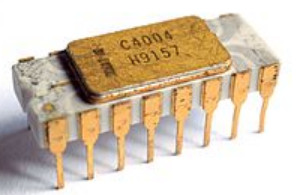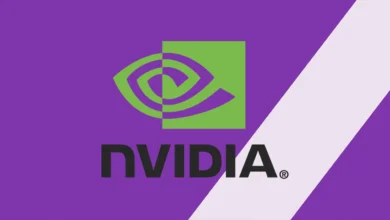What is the difference between 14 nm 7 or 5 in the processor

Nanometer fabrication technology in processors: What is the difference between 14 nm and 7 or 5? Certainly there is a difference. Otherwise, the technology will not be developed to reduce space and benefit from reducing energy consumption, especially in phones, so that the battery does not drain quickly, and the temperature is lowered in mobile or office devices, etc.
Did you know the term nanometer technology was launched 49 years ago, i.e. at the beginning of 1971, and it was produced by Intel, the first processor in the world, and the inventor of this is Federico Fagin.

What is it: As you can see in the two pictures, the golden legs are what they mean by the nanometer. They work to approximate the legs, but not two letters in the nanometer scale. A small standard unit that is not only visible to the naked eye is a commercial technical term.
The difference: the smallest thing they reached is 5 nm. All that the processor uses a smaller nano-manufacturing technology is working on minimizing the processor and this makes the space in the devices available to add another piece such as the entrance to the headphones and the charger to enlarge the bluetooth RAM and leave space even if it is simple for the battery is larger and the introduction of a lot of features And specifications to the phone.
One of the most important developments that have occurred in the processors is the development of nanotechnology. In what follows, we will explain this in order from 1971 year to 2020.
Processor history of nanometer versions:
- The world’s first microprocessor to use nanometer manufacturing technology was Intel in 1971.
- 7,500 – 6,000 nanos in 1972 and scaled from 6,000 to 800 in 1987 for Motorola.
- Then from eight hundred graduations until it reached 130 in 2001, and the processor was produced by Fujitsu.
- So Sun / Oracle in 2010 hit 40.
- Intel scored 14 in 2015.
- Qualcomm to reach 10 in 2016.
- The Apple P7 came in 2018.
- Until they reached the latest development in technology, which is 5 nanometers in 2020, and there were two companies, Apple and then Huawei, which are the only two companies that manufacture only 5 nanometers until now, and no other company has reached this.
Does nanometer technology speed up the processor:
It does not accelerate the processor responsible for the speed is the processor, which is the processor itself that processes files to show you the speed via the graphics card and stores them temporarily in the RAM it contains, which is a semi-complex process to explain the processor to be faster, it enters a number of factors, but I will explain a simple example.
The example would be without any other specifications not mentioned: a 2Ghz quad-core 14 nm processor and a dual-core 4Ghz 7 nm processor; Equal in processing speed, because this one has a quad-core at a speed of 2, which is multiplied by four, i.e. 8 GHz, and the other has a 4 quad-core multiplied by 2, which will equate to 8 GHz, but a dual-core 4Ghz 7 nm processor differs in something which is lower temperature and less energy consumption.










